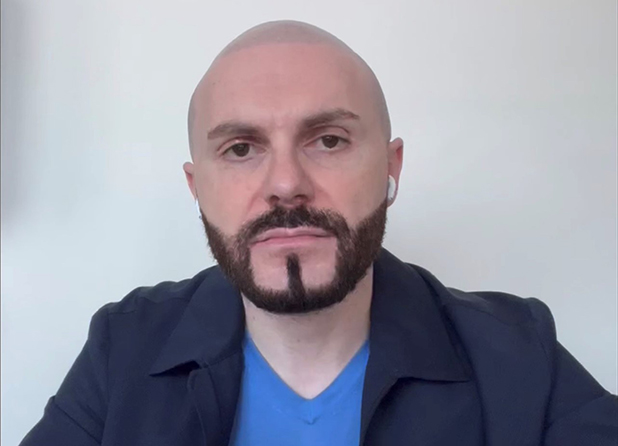
In September 2020, the World Economic Forum (WEF) published the Stakeholder Capitalism Metrics, which represent a solid stepping stone towards establishing a standard ESG reporting system. To exchange best practices and learn from ESG challenges and opportunities, WEF has then convened the Community of ESG Practitioners.
One of the most interesting things I’ve learned as a member of WEF’s Community of ESG Practitioners is that so far, we lack a consistent and comprehensive ESG reporting method. Apart from posing a threat to effective ESG disclosures, not having a standardized ESG reporting system is an obstacle for communications. It somehow prevents us from being able to validate communications claims or carry out PR genuinely.
With our climate deteriorating at an alarming rate, it has never been more critical to be able to scientifically measure the environmental impact of business.
Working in Dubai for the past 15 years, I’ve helped businesses use PR to communicate their ESG stories, from large enterprises and investors to startups and entrepreneurs. Over the past 5 years, I’ve witnessed how communications and CSR have started converging and becoming one function within organizations of all sizes.
Meanwhile, many entrepreneurs have been focusing on social innovation, creating businesses with purpose at the core and from the outset. In their case, PR comes genuinely. On the other hand, large enterprises continue making environmental efforts and using PR to communicate their impact in support of the SDGs.
Have these businesses, big or small, been adopting the right approach to sustainability? I believe the best approach to sustainability is creating and running a business rooted in purpose, ensuring that the very operations will most likely generate a sustainable impact by default, and therefore communications become a natural nexus between brands and communities.
There is a huge potential in the ‘profit with purpose’ model, for SMEs in particular. The SME sector in the MENA region, and similarly in other parts of the world, encompasses 90% of total businesses. SMEs also create seven out of 10 jobs in emerging markets, and they are responsible for 10 to 40% of all formal employment.
While it’s rewarding to adopt a purpose-driven business model from the outset, it’s okay if that doesn’t happen. Sustainability can be pursued at any stage of the business lifecycle. Today, brands across the board are increasingly recognizing the importance of net-zero policies as it’s becoming clear that unsustainable operations will have a negative impact on brand perception, and will eventually hurt the bottom line.
However, whether you are a small business or a large enterprise, a sound ESG strategy is not a plan for a year, two or even five years. It’s a life-long commitment. Undoubtedly, there must be short-term objectives, KPIs, tracking and measurement. However, KPIs shouldn’t be very ambitious, as this often means that they’re unrealistic. The “next quarter” in ESG reporting should be about the next 25 years rather than the next three months.
Taking Crescent Enterprises as an example, and through its business incubation unit, the company has launched a sustainable transport company called ION. ION has been established based on a clear vision of incorporating environmental impact into the economic viability of the business model. Since then, ION has been working on creating a zero-emissions transport infrastructure across MENA through the deployment of electric vehicles and charging stations.
Earlier this month, global delivery giant UPS announced that they are using Expo 2020 Dubai as a testing ground for sustainable logistics.
On the government level and due to its efforts in fighting climate change, the UAE has been selected as the host country for COP28 in 2023.
On a global scale, Uber has committed to becoming a zero-emission mobility platform by 2040. Didi is another transport company that is also working to reduce its carbon emissions.
Away from mobility, Starbucks Middle East is a good example of how a well-established brand can execute a sustainable transformation. The company is now working to become resource positive by 2030. It has been reducing its carbon emissions and waste, expanding its plant-based and environmentally friendly menu in the region, and shifting to reusable packaging and greener stores. Starbucks is not only pursuing traditional communications tactics to promote its environmental efforts, but also encouraging its partners and customers to join its sustainability journey across its 9,000+ stores in the MENA region.
In the next year or so, I hope I will be able to cite better examples of next-generation approaches to sustainability, and I look forward to a bigger sense of responsibility from communication professionals to carry out ESG communications genuinely—not only in favour of their employers but with the ultimate objective of truly helping our planet heal.
ESG communications is one of the battles in the war against climate change. To win this battle, we must do more, and we must act now. Otherwise, we’re heading towards a post-apocalyptic world. We can’t ignore the critical role of government and the business community, but as communicators and ESG practitioners, we can also play our part by advocating for authentic environmental efforts and realistic communications.
Baha Hamadi’s Profile
Board Member, Public Relations & Communications Association MENA
Member – Community of ESG Practitioners, World Economic Forum
VP Communications, Deep Knowledge Group
Co-Founder & CMO, TXM Innovations
Mentor, Dubai Chamber’s Centre for Responsible Business
Member, Asia-Pacific Association of Communications Directors









